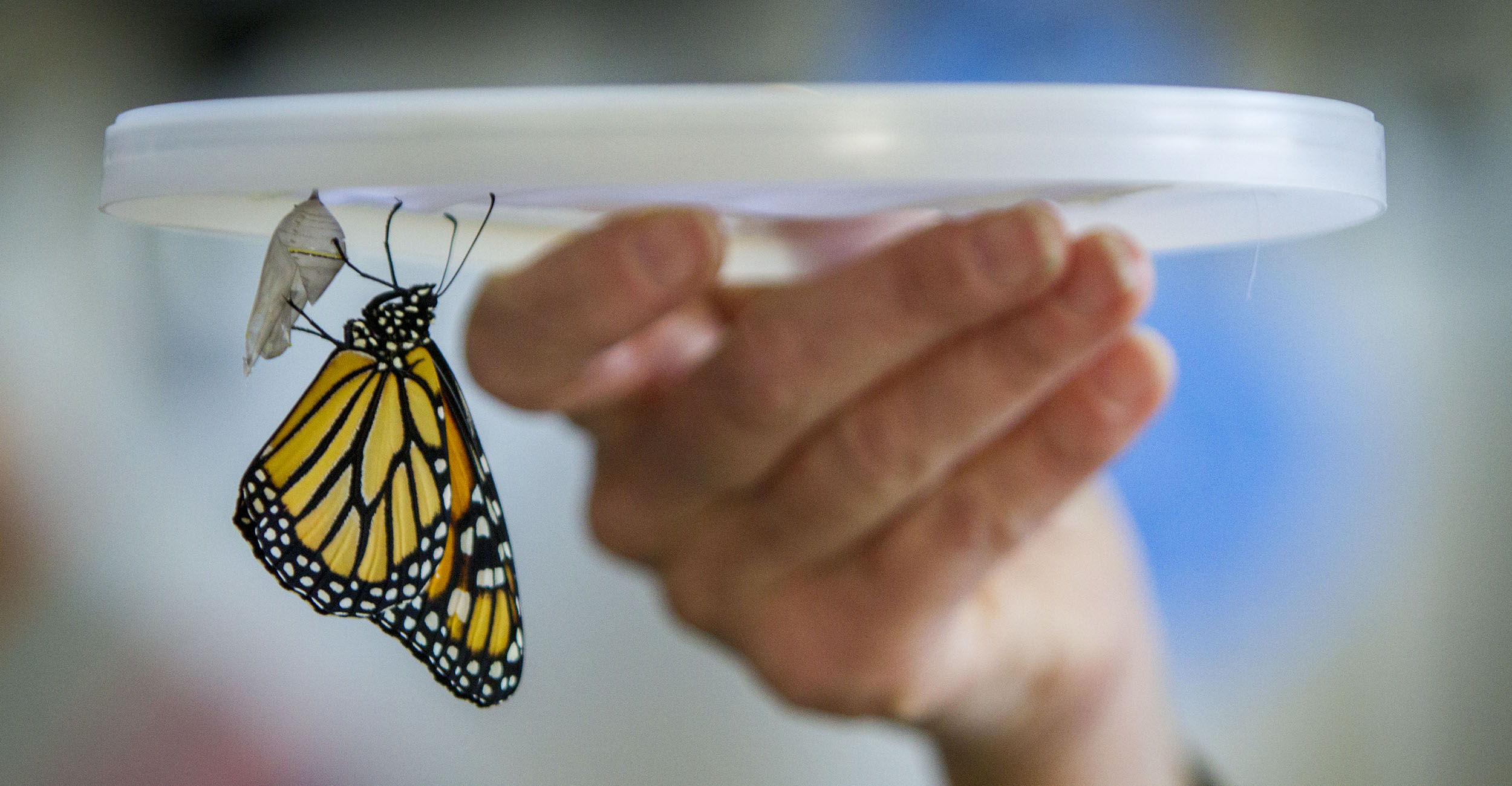
Monarch Population Joins List of Endangered Species
Friday, July 22, 2022
Media Contact: Harrison Hill | Senior Research Communications Specialist | 405-744-5827 | harrison.c.hill@okstate.edu
Every spring and fall, millions of monarch butterflies make their annual migration, many flying over and visiting OSU’s campus, but that number is dwindling.
Monarch populations have been in decline for years, and the International Union for the Conservation of Nature (IUCN) recently designated monarchs as endangered.
The IUCN estimates the population of monarch butterflies in North America has declined between 22% and 72% over 10 years, although measuring can be difficult.
Despite the implications of the IUCN report, OSU Integrative Biology professor Kristen Baum said there is still hope.
“The report mentions that the population decline seems to have slowed or even stabilized over the past 10 years,” said Baum, who specializes in pollinator ecology and serves as associate dean for research for the College of Arts and Sciences. “There has been lots of effort to plant milkweed and nectar plants, restore habitat and manage habitat in ways that benefit monarchs. So hopefully, some of that's making a difference.”
That effort really took off in the U.S. after a 2014 petition to list monarchs as threatened under the Endangered Species Act. However, in December 2020 the decision was made that listing the monarch was warranted but precluded.
“That meant that monarchs are at risk, but there are other species that they consider to have a higher risk and a higher priority at the present time,” Baum said. “The monarch is now a candidate species, meaning the U.S. Fish and Wildlife Service reevaluates the status of monarchs annually to see how they are doing.”
The IUCN list is generally more expansive than the U.S Endangered Species Act, Baum said.
“For insects, there is a huge difference. Probably less than 20% of those on the IUCN list are included under the Endangered Species Act,” she said.
The new IUCN listing does not bring any more regulatory implications for the U.S., but the IUCN listing still serves a valuable purpose.
“It does place more emphasis and concern on monarchs,” Baum said. “Another important point about the IUCN listing is that it applies specifically to the migratory subspecies of the monarch butterfly.”
While there are nonmigratory populations in other locations — mainly outside the U.S. — there are two populations this listing impacts.
“The eastern migratory population moves through Oklahoma in the spring and in the fall from overwintering sites in Central Mexico to breeding sites in the Upper Midwest and southern Canada. The western population breeds in states west of the Rocky Mountains and overwinters along the California coast,” Baum said.
Baum said there have been extensive efforts to aid monarch populations over the past decade, and future efforts have the potential to make a difference.
A decade ago, it was really hard to find native milkweed — the main food source for monarch caterpillars. Now, native milkweed plants beneficial to monarchs and other pollinators are more readily available.
Another area of focus is on providing nectar sources for the fall migration, Baum said.
“There are some ongoing projects where we're trying to figure out where monarchs are fueling up,” she said. “So where are they accumulating all the lipids from nectar that are then going to allow them to survive the winter?”
Most of what Baum does in her lab focuses on pollinator responses to land use and management practices.
“We do research with prescribed fire, grazing, mowing regimes, crop production, and other topics relevant to Oklahoma,” Baum said. “Usually management activities that support diverse grasslands end up by default creating good monarch habitats.”
“And it's nice because habitat for other wildlife species, such as quail, intersects well with monarch habitat. So if you're providing good habitat, — what we should have in Oklahoma — usually that's going to provide good pollinator resources as well.”
For Baum, habitat is really the first step and it solves a lot of other problems that affect the population, like parasites and disease, which are often more of a problem where monarchs tend to be more concentrated because there's not more habitat available, Baum said.
“Habitat is really the biggest issue,” she said.
While the IUCN listing may not change regulations or any laws regarding monarchs in the U.S., Baum said the elevated attention to the problem is beneficial.
“I think anything that increases interest in monarchs is a good thing,” Baum said. “And then what's good for monarchs is good for other pollinators and wildlife as well. Hopefully, it is a net benefit across the board.”
